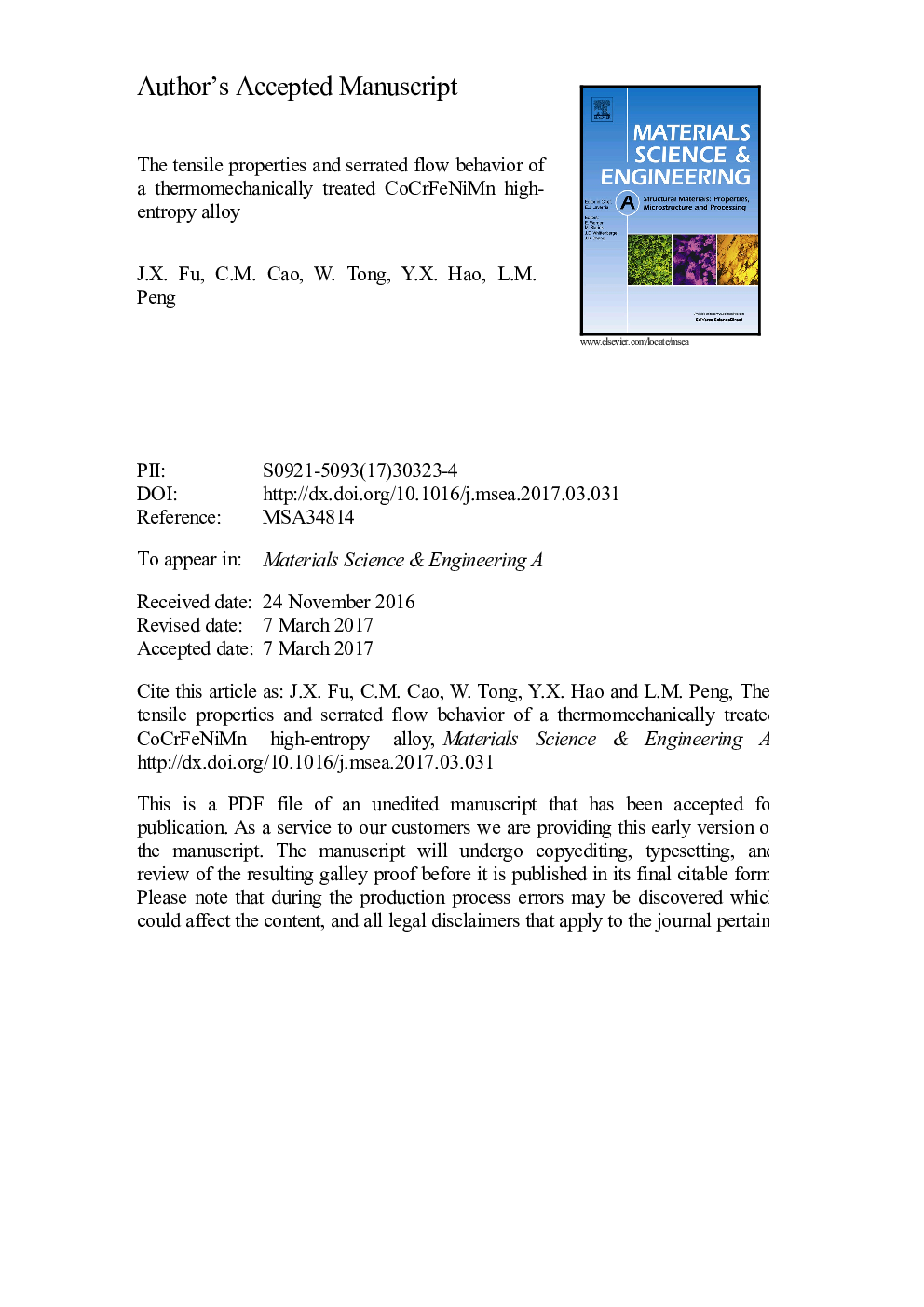| Article ID | Journal | Published Year | Pages | File Type |
|---|---|---|---|---|
| 5455970 | Materials Science and Engineering: A | 2017 | 35 Pages |
Abstract
Serrated flow behavior of CoCrFeNiMn high entropy alloy with a single face-centered cubic phase was systematically examined over a wide range of temperature and strain rate. The alloy exhibited excellent fracture-resistance with RT elongation up to 56%. Prominent serrations occurred at the medium temperature range and evolved in the sequence of AâA+BâBâB+CâC with increasing temperature and decreasing strain rate. The initial small plasticity produced low density of dislocations piled up at grain boundaries and high density of dislocations were tangled to form cell substructures during subsequent severe deformation stage. Bowing and kinks of dislocations were frequently observed at 400 and 600 °C. The critical strain for the onset of serrated flow decreased with increasing temperature and decreasing strain rate, indicating a normal and not inverse Portevin-Le Chatelier (PLC) effect due to the thermodynamic stability of the alloy. Two temperature-dependent values of activation energy for serrated flow (Q) were obtained. The estimated low value (116 kJ molâ1) implied that pipe diffusion is responsible for the pinning process of dislocations from 300 to 500 °C. In contrast, a higher Q (295 kJ molâ1) between 500 and 600 °C suggested that the pinning or unpinning process of dislocations is controlled by the most sluggish diffusion species (i.e. Ni) in the high-entropy alloy.
Keywords
Related Topics
Physical Sciences and Engineering
Materials Science
Materials Science (General)
Authors
J.X. Fu, C.M. Cao, W. Tong, Y.X. Hao, L.M. Peng,
